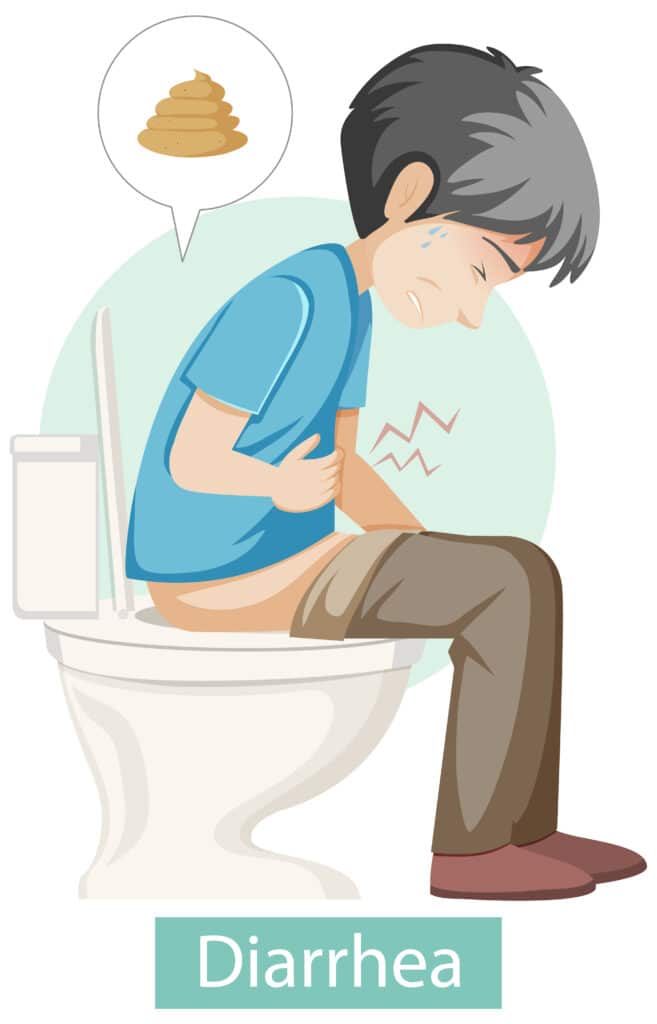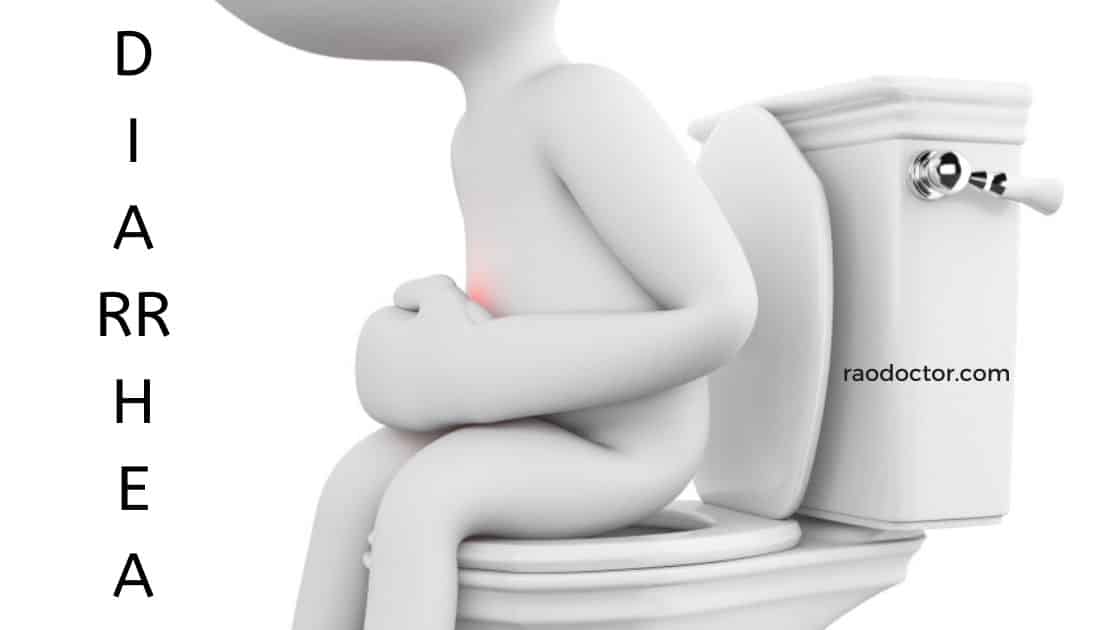Table of Contents
Types, Causes, Symptoms, and Treatment of Diarrhea and Dysentry
Have you recently suffered from a bout of loose motions that made you so sick that you had to take intravenous [IV] fluids? Or the loose motions so severe that you had to get admitted in the hosptital to get treated? And then you wondered “how I can prevent it in future”? If yes, then this article is for you!
Welcome to this comprehensive guide on understanding diarrhea and dysentery. These two gastrointestinal disorders are more common than we realize and can be quite distressing.
In the recent past, I had witten an article on various Gastroinstentinal Diseases where I had made a mention of these two conditions.
Whether you’re a healthcare professional, a concerned individual, or someone seeking information on these conditions, you’ve come to the right place.

In this guide, we will delve into the various types of diarrheas and dysentery, uncover their causes, explore the wide range of symptoms they present, and discuss the most effective treatment options available.
With our user-friendly approach and expert insights, we aim to provide you with a comprehensive understanding of these conditions, enabling you to make informed decisions about your health or that of your loved ones.
Differentiating between diarrhea and dysentery
Diarrhea and dysentery are both gastrointestinal disorders that affect the digestive system, but they have distinct differences.
Diarrhea is characterized by frequent loose or watery stools, while dysentery is a more severe form of diarrhea that is accompanied by blood or mucus in the stool.
Diarrhea is often caused by infections, certain medications, or underlying medical conditions, while dysentery is primarily caused by bacterial or parasitic infections.
It is important to differentiate between the two because dysentery requires more aggressive treatment and can have potentially serious complications if left untreated.
When experiencing diarrhea, it is essential to monitor the consistency and frequency of bowel movements.
If you notice blood or mucus in your stool, it is advisable to seek medical attention, as this may indicate dysentery.
Understanding the differences between these two conditions will help you make informed decisions about seeking appropriate medical care.
Types of diarrhea – acute, chronic, and traveler’s diarrhea
Diarrhea can be classified into three main types:
- acute,
- chronic, and
- traveler’s diarrhea.
Acute diarrhea
is the most common type and typically lasts for a short duration, usually less than two weeks. It is often caused by viral or bacterial infections, such as rotavirus or E. coli. Acute diarrhea can be accompanied by symptoms like abdominal pain, cramps, and dehydration, but it usually resolves on its own with proper hydration and rest.
Chronic diarrhea
on the other hand, persists for more than four weeks and can be a sign of an underlying health condition. It may be caused by diseases like irritable bowel syndrome (IBS), inflammatory bowel disease (IBD), or malabsorption disorders. Chronic diarrhea requires a thorough medical evaluation to determine the underlying cause and appropriate treatment.
Traveler’s diarrhea
is a specific type of acute diarrhea that occurs when individuals travel to foreign countries with different sanitation and hygiene standards. It is commonly caused by consuming contaminated food or water. Traveler’s diarrhea can be prevented by practicing good hygiene, avoiding risky foods and drinks, and considering prophylactic medications in certain cases.
Causes of diarrhea and dysentery – bacterial, viral, and parasitic infections

Diarrhea and dysentery can be caused by various infections, including:
- bacterial,
- viral, and
- parasitic infections.
Bacterial infections
are a common cause of both conditions, with bacteria like E. coli, Salmonella, and Shigella being the primary culprits. These bacteria are typically transmitted through contaminated food or water, poor hygiene practices, or close contact with infected individuals.
Viral infections
such as rotavirus, norovirus, and adenovirus, are another significant cause of diarrhea, particularly in children. These viruses are highly contagious and can spread through person-to-person contact, contaminated surfaces, or consuming contaminated food or water.
Parasitic infections
such as giardiasis and amoebiasis, can also lead to diarrhea and dysentery. These parasites are usually transmitted through contaminated food or water and can cause severe gastrointestinal symptoms.
It is important to note that dysentery is more commonly associated with parasitic infections, especially amoebic dysentery caused by Entamoeba histolytica.
Common symptoms of diarrhea and dysentery
Both diarrhea and dysentery share several common symptoms, but dysentery is generally more severe and accompanied by additional symptoms.
The primary symptom of diarrhea is loose or watery stools, which may occur several times a day. Other common symptoms include abdominal pain, cramping, bloating, nausea, and dehydration.
Dehydration is a significant concern, especially in young children and older adults, as it can lead to serious complications.
Dysentery, on the other hand, presents with similar symptoms to diarrhea but is often characterized by the presence of blood or mucus in the stool. This is seen commonly in amoebic dysentery and sometimes in E. Coli dysentery.
The blood may be bright red or dark and can be mixed with mucus. Dysentery can also cause more intense abdominal pain and cramping, along with fever and a general feeling of illness. If you experience these symptoms, it is important to seek medical attention promptly.
Diagnosing diarrhea and dysentery – medical tests and examinations
When experiencing persistent or severe diarrhea or suspected dysentery, it is essential to seek medical evaluation for an accurate diagnosis. The doctor will begin by conducting a thorough medical history and physical examination.
He or she may ask about the duration and frequency of symptoms, any recent travel, exposure to contaminated food or water, and any other relevant details. This information will help guide further diagnostic testing.
Medical tests commonly used to diagnose diarrhea and dysentery include:
- stool analysis,
- blood tests, and
- imaging studies.
Stool analysis and stool culture can identify the presence of bacteria, viruses, or parasites, as well as assess for the presence of blood or mucus.
Blood tests can help determine if there is an underlying infection or inflammation in the body.
In certain cases, imaging studies such as an abdominal ultrasound or CT scan may be required to evaluate the condition of the gastrointestinal tract.
Treatment options for diarrhea and dysentery –
Home remedies
The treatment of diarrhea and dysentery depends on the underlying cause and the severity of symptoms. For mild cases of acute diarrhea, home remedies and supportive care are often sufficient. These include:
- oral rehydration solutions to replace lost fluids and electrolytes;
- a bland diet consisting of easily digestible foods. I usually recommend fruits like banana and apple so that the consistency of the stools changes from watery to well formed stools;
- probiotics to restore the balance of gut bacteria. The best way to do this having yogurt or curd with your meals. A meal having rice, curd and lentil soup works wonders in improving the consistency of the stools. Avoid having meat, milk and eggs as they are difficult to digest during a bout of diarrhea or dysentery.
Medication
In more severe cases or when dysentery is suspected, medical intervention is necessary. Antibiotics may be prescribed to target bacterial infections causing dysentery.
It is important to note that antibiotics are not usually recommended for viral or parasitic diarrhea, as they may be ineffective or even worsen the condition.
In case of parasitic diseases such as amoebiasis or giardiasis, medications like metronidazole or tinidazole or secnidazole or ornidazole may be prescribed by your doctor.
Antidiarrheal medications such as loperamide [commonly available in India as ROKO] or lomofen should also be used with caution, as they can delay the elimination of toxins from the intestines/body.
Prevention strategies
Prevention strategies play a crucial role in managing diarrhea and dysentery. They include the following measures:
- Practicing good hand hygiene, especially before eating or preparing food, is essential in preventing the spread of infections.
- Drinking clean, safe water and consuming properly cooked and stored food can also reduce the risk of contamination.
When traveling to areas with a higher prevalence of diarrhea and dysentery, it is advisable to take preventive measures, such as
- avoiding tap water,
- raw or undercooked foods, and
- ice cubes made from tap water.
Complications and risks associated with diarrhea and dysentery
While most cases of diarrhea and dysentery resolve without complications, there are risks associated with these conditions, particularly if left untreated or in vulnerable populations. The primary concern is dehydration, which can occur due to fluid loss from frequent bowel movements and vomiting. Dehydration can lead to electrolyte imbalances, organ dysfunction, and, in severe cases, life-threatening conditions.
In the case of dysentery, complications can arise from the underlying infections. For example:
Amoebic dysentery caused by Entamoeba histolytica can lead to the formation of abscesses in the liver or other organs. Reference– Amoebic Abcess
Bacterial dysentery, such as that caused by Shigella, can cause complications like reactive arthritis or hemolytic uremic syndrome, a condition that affects the kidneys and blood cells. Reference: Shigella Infection
When to seek medical help for diarrhea and dysentery
In most cases, diarrhea can be managed at home with supportive care and self-treatment. However, certain situations warrant immediate medical attention. These include:
- Persistent diarrhea lasting more than two days in adults or 24 hours in young children.
- Severe abdominal pain or cramping.
- High fever (above 101°F or 38.3°C).
- Blood or mucus in the stool.
- Signs of dehydration, such as excessive thirst, decreased urine output, or dizziness.
- Diarrhea in infants under six months of age.
- Diarrhea in individuals with compromised immune systems or chronic medical conditions.
If you or someone you know experiences any of these symptoms, it is crucial to seek medical help promptly to ensure appropriate evaluation and treatment.
Preventive measures to avoid diarrhea and dysentery
Preventing diarrhea and dysentery involves adopting certain preventive measures to reduce the risk of infection. These include:
- Practicing good hand hygiene by washing hands with soap and water for at least 20 seconds.
- Avoiding close contact with individuals who have diarrhea or dysentery.
- Drinking clean, safe water, and avoiding tap water or questionable water sources.
- Consuming properly cooked and stored food, especially when eating out or traveling.
- Avoiding raw or undercooked foods, including seafood, meat, and eggs.
- Using separate cutting boards and utensils for raw and cooked foods to prevent cross-contamination.
- Taking appropriate precautions, such as vaccinations and medications, when traveling to areas with a higher risk of diarrhea and dysentery.
By following these preventive measures, you can significantly reduce your chances of contracting diarrhea or dysentery and protect your overall health.
Conclusion
In conclusion, understanding diarrhea and dysentery is essential for effective management and prevention.
By differentiating between the two conditions, recognizing their various types and causes, understanding the common symptoms, and being aware of available treatment options, you can make informed decisions about your health.
It is important to seek medical attention when necessary and adhere to preventive measures to minimize the risk of infection.
Remember, knowledge is power when it comes to addressing and managing diarrhea and dysentery effectively. Stay informed, stay healthy!
Final words
If you have found this article, please promote it for me by sharing it on social media by clicking the icons at he bottom of the article or you can Click to Tweet here-
Understanding Diarrhea and Dysentery: A Comprehensive Guide Share on X



